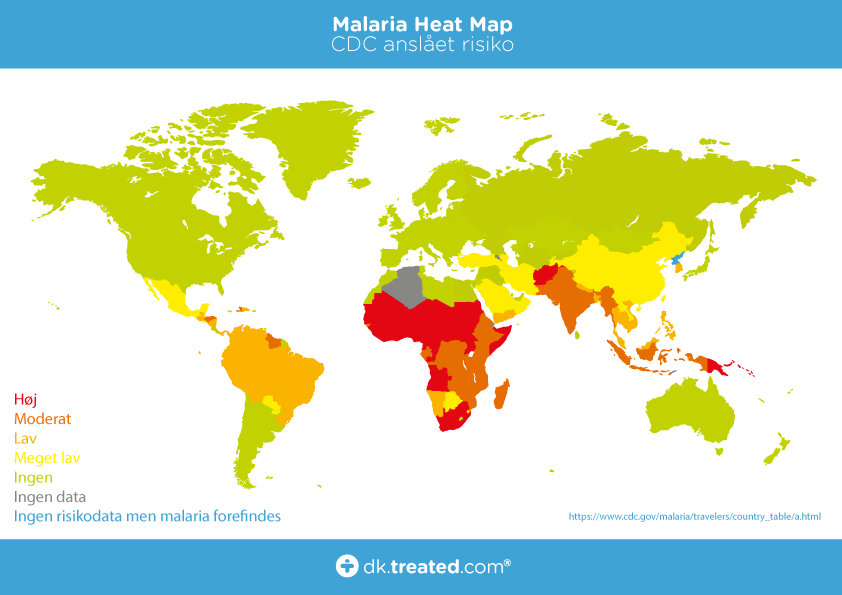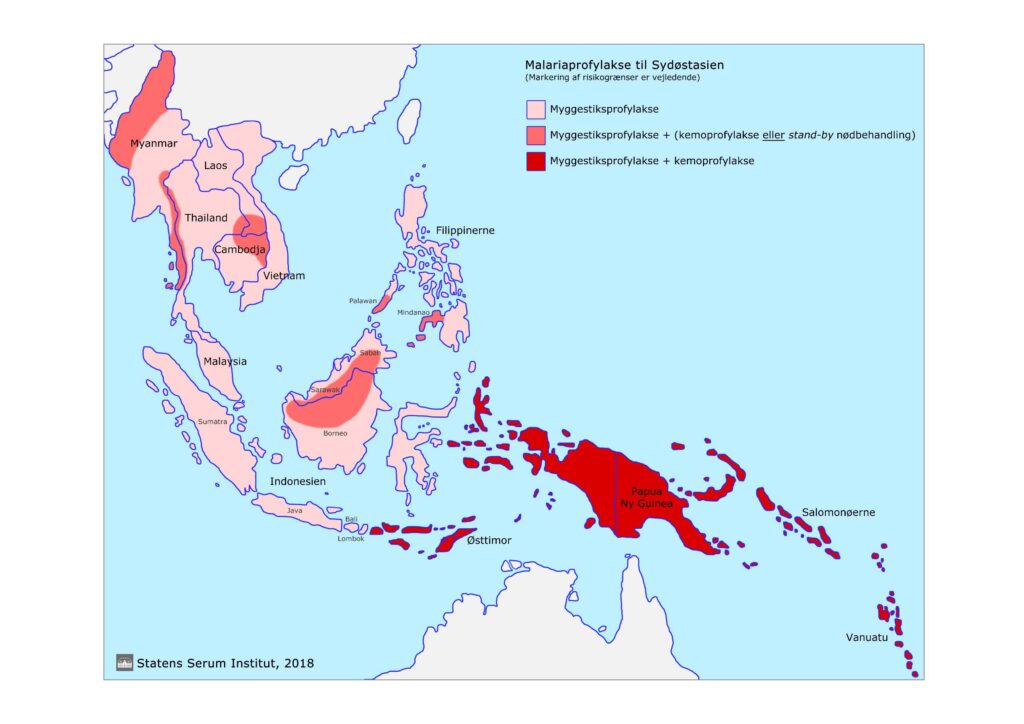Kirsten, May 6, 2020
The ship doctor’s thoughts on vaccines and malaria prevention for circumnavigation in Rhumb Runner.
Vaccinations
First of all, I am not a specialist in the field, but I can see, like anyone else, what the cdc recommends.
Diphtheria/tetanus and Hepatitis A
I can see that most of the world you recommend vaccine for diphtheria/tetanus and hepatitis A. Diphtheria/tetanus vaccine is just a booster. A booster lasts for 10 years, so if you are vaccinated within the last 7 years it should not be necessary to get vaccinated before departure. The hepatitis A vaccine lasts for 20 years after 2 vaccines given at a 1/2-year interval.
Yellow fever
The vaccine should be given when travelling in Panama, Columbia, Brazil, Venezuela, Trinidad/Tobago, Guyana, Suriname, French Guiana. In many other countries, a certificate of yellow fever is required if you come from an area where there is yellow fever. Therefore, make sure you get vaccinated from home and take care of the vaccination certificate, as this must be carried on the journey. The vaccine is assumed to last a lifetime.
Japanese encephalitis
Japanese encephalitis is a serious disease that you can die from. The disease is transmitted by mosquitoes and is found in Asia (India, Vietnam, Thailand, China and Indonesia). It is mainly in rural areas with piglets and wading birds and, in the case of Thailand, especially during the period May to October. The State Serum Institute recommends vaccination for visit durations of more than 4 weeks in these areas. The vaccine is quite expensive (1200DKK per vaccine at The Danish Doctors’ Vaccination Service). 2 vaccinations last 1 year, 3 vaccinations last 10 years. Please note that the 3rd the vaccination must be given at least 12 months after the first two, to be given at least with one month interval. As we are planning a long-term stay in Indonesia, we intend to get vaccinated. Of course, you have to protect yourself from mosquito bites in any case.
Typhoid
Typhoid occurs all over the world. The incidence is related to the hygienic conditions and is high in Asia (and in particular the Indian subcontinent), South and Central America and Africa. The infection is most commonly transmitted by ingestion of food or water contaminated with human feces infected with typhoid fever. There is a vaccine for typhoid fever. Vaccination may be considered for long-term stays in areas with high incidence of Salmonella Typhi.
Travel diarrhoea
Travel diarrhoea can be prevented by the following precautions:
- To choose cooked, baked or fried dishes that are prepared shortly before they are eaten.
- Choosing drinks made from boiled water (tea, coffee), mineral water with carbonated bottled with sealed lids, beer or sour-milk products of well-known products.
- To eat fruit that you have peeled yourself.
- To avoid tap water, be it directly from the faucet or as ice cubes in drinks or in food.
- To avoid raw fish, raw shellfish (e.g. oysters and mussels), raw egg yolks, raw vegetables from low-growing plants (e.g. lettuce leaves), mayonnaise-containing salads and all kinds of ice cream.
- To avoid bathing near the sewer outlet and in swimming pools where the water is not chlorine treated.
Malaria prevention
Malaria is found in large parts of the world in the areas where we are staying with the ship. The areas are devided in high, moderate and low risk areas. It is recommended to use malaria prophylaxis in high-risk areas. It is a little more up to one’s own temperament whether you want to take prophylactic (preventive) medication for malaria in areas of moderate risk. In low-risk areas, protection against mosquito bites is recommended. The mosquitoes sting after dark. You can use DEET (mosquito repellent) and impregnated mosquito nets. I have also been advised by the Danish Doctors’ Vaccination Service, which recommends malaria prophylaxis (malarone) in the following areas:
1) South America if you are going into the country (Amazon)
2) Southeast Asia (East Timor, Papua New Guinea, Solomon Islands, Vanuatu)
3) Africa (Mozambique, Madagascar) In areas such as the Caribbean islands, the Pacific Islands, Thailand and South Africa, therefore, preventive antimalarial drugs need not be taken.. A tablet of malarone costs 10DKK, so it’s a significant economic cost.
In areas such as the Caribbean islands, the Pacific islands, Thailand and South Africa, therefore, preventive antimalarial drugs need not be taken. A tablet of malarone costs 10kr, so it’s a significant economic cost.

High risk areas:
South East Asia: Vanuatu, Solomon Islands, Papua New Guinea, East Timor.
Africa: Madagascar, Mozambique.
Moderate risk areas:
South and Central America: Panama (minus the Canal and Panama City), Columbia, Haiti.
Southeast Asia: Borneo (Border with Malaysia), Thailand (minus Bankok and Phuket).
Low risk areas:
South and Central America: Brazil, Venezuela, Guyana, Suriname, French Guiana, Costa Rica, Nicaragua, Dominican Republic.
Southeast Asia: Bali, Sumatra, Malaysia.
Africa: Cape Verde, South Africa (Margazi-Mtubatuba), Namibia.
Here’s a local malaria map for Southeast Asia

